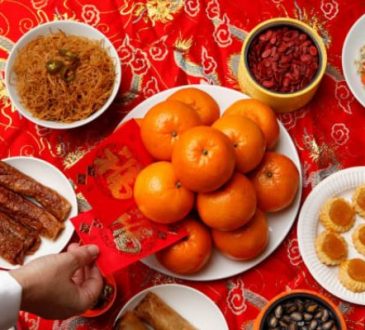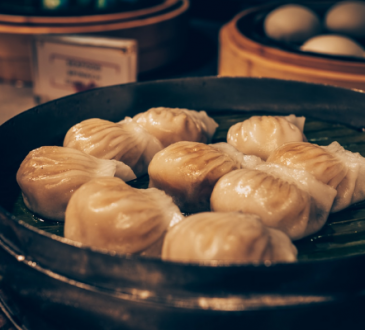Demystifying Gluten in Chinese Cuisine: Is Chinese Food Gluten Free
In recent years, awareness of gluten and its potential health implications has surged. For individuals with celiac disease, gluten intolerance, or those choosing a gluten-free lifestyle, understanding the gluten content of different cuisines is crucial. Chinese cuisine, with its rich tapestry of flavors and ingredients, often raises questions about gluten content. In this comprehensive guide, we’ll explore the world of Chinese food through the lens of gluten, examining common dishes, ingredients, and considerations for those seeking gluten-free options.
Contents
Understanding Gluten:
Before delving into the specifics of Chinese cuisine, let’s clarify what gluten is and why it matters to certain individuals. Gluten is a protein found in wheat, barley, rye, and their derivatives. It provides elasticity to dough, helping it rise and maintain its shape. While harmless for most people, gluten can trigger adverse reactions in individuals with celiac disease, wheat allergy, or non-celiac gluten sensitivity.
For those with celiac disease, consuming gluten can damage the lining of the small intestine, leading to various digestive issues and long-term health complications. Even small amounts of gluten can provoke symptoms in sensitive individuals, necessitating strict avoidance of gluten-containing foods.
Gluten in Chinese Cuisine:

Chinese cuisine is incredibly diverse, encompassing a wide range of flavors, cooking techniques, and ingredients. While many traditional Chinese dishes are naturally gluten-free, others may contain hidden sources of gluten. Here’s a closer look at some common components of Chinese cuisine and their gluten content:
- Staple Ingredients:
- Rice: A staple food in Chinese cuisine, rice is naturally gluten-free and forms the basis of many dishes, such as fried rice and rice noodles.
- Corn: Corn and corn-based products are also gluten-free, commonly used in dishes like corn soup or as a thickening agent in sauces.
- Soy: Soybeans and soy-based products like tofu and soy sauce are gluten-free, although individuals should beware of soy sauce variants containing wheat (tamari sauce is a gluten-free alternative).
- Noodles and Dumplings:
- Wheat-based noodles and dumpling wrappers are prevalent in Chinese cuisine, posing a challenge for those avoiding gluten. However, rice noodles, mung bean noodles (cellophane noodles), and tapioca starch wrappers offer gluten-free alternatives.
- Sauces and Condiments:
- Soy sauce: Traditional soy sauce is made from soybeans, wheat, salt, and water. However, gluten-free soy sauce varieties, made with soybeans and no wheat, are widely available.
- Hoisin sauce: While traditionally containing wheat, gluten-free versions of hoisin sauce can be found in stores.
- Oyster sauce: Typically gluten-free, oyster sauce adds depth of flavor to many Chinese dishes.
- MSG (Monosodium Glutamate): Often used as a flavor enhancer in Chinese cooking, MSG itself is gluten-free.
- Deep-Fried Foods:
- Many Chinese dishes involve deep-frying, which can introduce cross-contamination risks if the same oil is used for frying gluten-containing items. It’s essential to inquire about fryer practices when dining out.

When dining at Chinese restaurants or preparing Chinese dishes at home, individuals following a gluten-free diet should exercise caution and communicate their dietary needs clearly. Here are some tips for navigating Chinese menus:
- Communication: Inform restaurant staff about your gluten intolerance or dietary preferences. They can often accommodate special requests or suggest gluten-free options.
- Menu Scrutiny: Carefully review menu descriptions for potential gluten-containing ingredients or dishes. Be wary of hidden sources of gluten, such as soy sauce in marinades or flour-based thickeners in sauces.
- Customization: Don’t hesitate to ask for modifications to dishes to make them gluten-free. For example, request gluten-free soy sauce or substitute wheat-based noodles with rice noodles.
- Cross-Contamination Awareness: Be mindful of cross-contamination risks, particularly in shared kitchen spaces or buffet-style establishments. Ask about kitchen practices to prevent unintended gluten exposure.
- Alternative Cooking Methods: Explore dishes that are inherently gluten-free, such as steamed or stir-fried options featuring rice, vegetables, and protein.
The Rise of Gluten-Free Chinese Cuisine:

As awareness of gluten-related health issues grows, so too does the demand for gluten-free options in Chinese restaurants. Many establishments now offer dedicated gluten-free menus or clearly label gluten-free dishes on their menus. Additionally, gluten-free substitutes and alternative ingredients are becoming more widely available, empowering individuals to enjoy Chinese cuisine without compromising their dietary needs.
Expanding on the topic of gluten-free Chinese cuisine, let’s delve deeper into some specific dishes and regional variations:
- Dim Sum: Dim sum, a traditional Chinese brunch or lunch meal, offers a variety of bite-sized delights. While some dim sum items are naturally gluten-free, such as steamed dumplings filled with shrimp or vegetables, others may contain gluten in the form of wheat-based wrappers or fillings. When enjoying dim sum, opt for gluten-free choices like steamed rice rolls, shrimp dumplings (har gow), or chicken feet.
- Hot Pot: Hot pot, a popular communal dining experience, involves cooking various ingredients in a simmering broth at the table. While the broth itself is typically gluten-free, diners should be cautious of additives or sauces that may contain gluten. Many hot pot restaurants offer gluten-free broth options and a selection of fresh meats, seafood, and vegetables for dipping.
- Sichuan Cuisine: Sichuan cuisine, known for its bold and spicy flavors, offers a plethora of gluten-free options. Dishes like mapo tofu (tofu in spicy bean sauce), dry-fried green beans, and kung pao chicken are typically safe choices. However, individuals should be cautious of Sichuan peppercorns, which may be mixed with flour in some preparations.
- Cantonese Cuisine: Cantonese cuisine, with its emphasis on fresh ingredients and subtle flavors, offers many gluten-free dishes. Steamed fish with ginger and scallions, stir-fried vegetables, and roasted meats like Cantonese-style barbecue pork (char siu) are excellent options. Additionally, rice congee, a savory rice porridge, is a comforting and gluten-free choice.
- Northern Chinese Cuisine: Northern Chinese cuisine features hearty and wheat-based dishes like dumplings, noodles, and pancakes. However, gluten-free alternatives are available, such as jianbing (a savory crepe made from mung bean and rice flour), stir-fried lamb skewers, and cumin-spiced potatoes.
- Taiwanese Cuisine: Taiwanese cuisine blends influences from various regions, offering a diverse array of gluten-free options. Street food favorites like grilled skewers, oyster omelets, and beef noodle soup (with rice noodles) are popular choices. Taiwanese night markets often feature stalls with allergen-friendly options clearly labeled for easy identification.
- Gluten-Free Chinese Desserts: Chinese desserts typically incorporate glutinous rice or wheat flour, posing challenges for those avoiding gluten. However, there are gluten-free dessert options available, such as fresh fruit platters, coconut milk-based desserts, and sweet red bean soup (made with adzuki beans).
Conclusion:
In conclusion, Chinese cuisine offers a myriad of flavors and culinary experiences, with many options suitable for individuals following a gluten-free diet. By understanding common ingredients, scrutinizing menus, and communicating with restaurant staff, those with gluten intolerance can navigate Chinese dining with confidence. While challenges may arise, the increasing availability of gluten-free alternatives and the willingness of restaurants to accommodate dietary restrictions make enjoying gluten-free Chinese food more accessible than ever before. With careful consideration and a sense of adventure, gluten-free diners can savor the delights of Chinese cuisine without worry.



